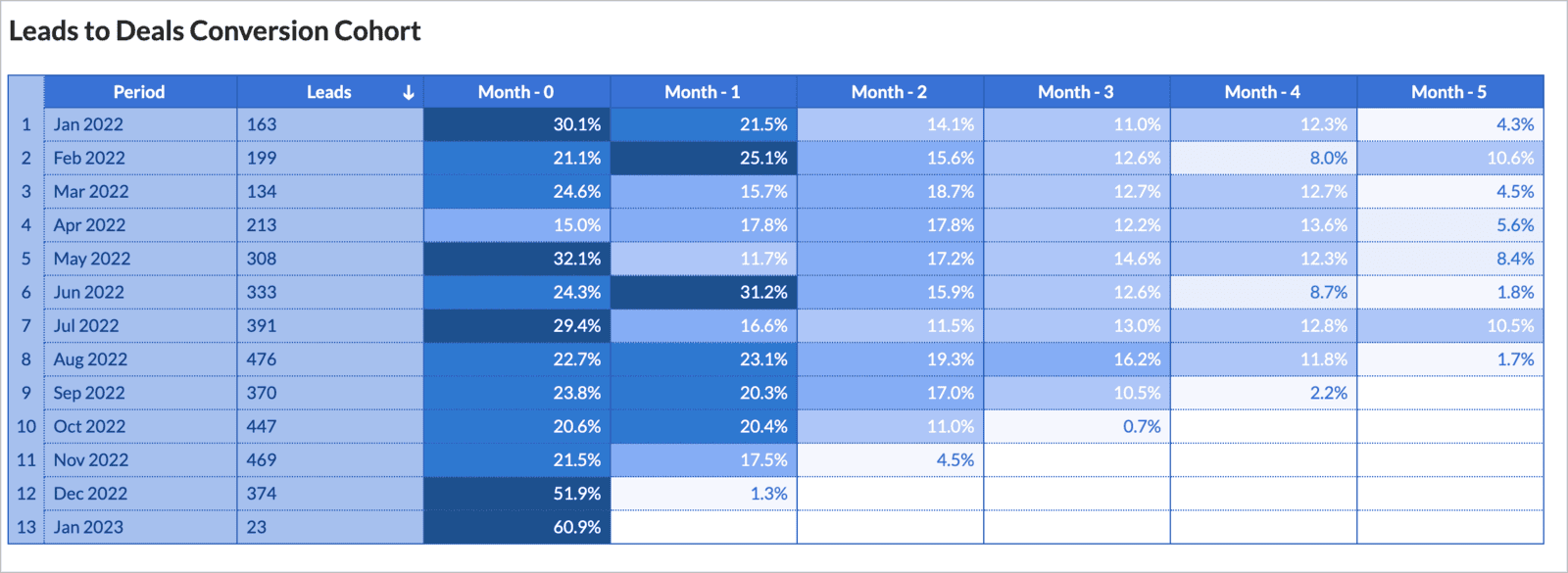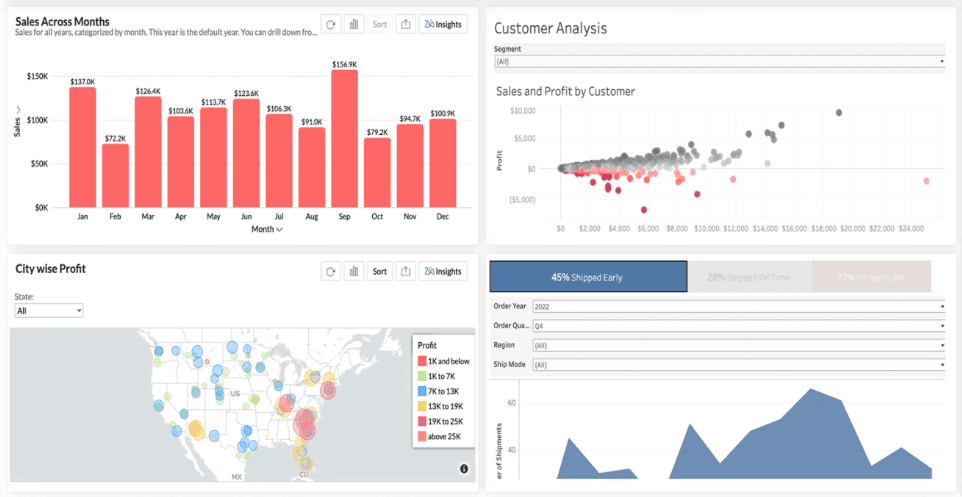Cohort analysis is a powerful tool for understanding how groups of customers, or cohorts, behave over time. By grouping users based on shared characteristics (e.g., acquisition date, geographic location, or specific actions), businesses can identify patterns, trends, and opportunities for improvement. Zoho Analytics offers the flexibility and capabilities to conduct comprehensive cohort analyses.

An example of 2 cohorts at the bottom charts, with 'tickets sold by days' andickets sold by week'.
Understanding Cohort Analysis
- Cohort Definition: A cohort is a group of individuals who share a common characteristic or experience within a specific timeframe.
- Key Metrics: Common metrics for cohort analysis include retention rates, conversion rates, average order value, and customer lifetime value.
- Visualization: Cohort data is often visualized in cohort tables or cohort charts to easily identify patterns and trends.


Benefits of Cohort Analysis


- Customer Segmentation: Identify distinct customer segments based on behavior and tailor marketing efforts accordingly.
- Product Performance Evaluation: Analyze product adoption and usage patterns over time to identify successful and underperforming products.
- Marketing Campaign Effectiveness: Measure the long-term impact of marketing campaigns on customer behavior and retention.
- Customer Lifetime Value Optimization: Identify high-value customer segments and tailor retention strategies accordingly.
- Churn Prediction: Analyze customer churn patterns to identify potential churn risks and implement proactive retention strategies.
Conducting Cohort Analysis with Zoho Analytics
Zoho Analytics offers the necessary tools to conduct comprehensive cohort analysis:
- Data Preparation: Ensure your data includes relevant dimensions (e.g., acquisition date, customer segment, product purchased) and metrics (e.g., revenue, orders, churn).
- Cohort Creation: Define your cohorts based on desired dimensions (e.g., acquisition month, customer segment).
- Metric Selection: Choose the key metrics you want to analyze for each cohort (e.g., retention rate, average order value).
- Visualization: Create cohort charts or tables to visualize the data and identify trends and patterns.
- Analysis & Insights: Analyze cohort data to uncover insights about customer behavior, product performance, and marketing campaign effectiveness.
Example Cohort Analysis Use Cases
- E-commerce: Analyze customer cohorts based on acquisition channel to understand which channels drive the most loyal customers.
- Subscription Business: Track cohort retention rates over time to identify factors influencing churn.
- Marketing Agency: Evaluate the performance of different marketing campaigns by analyzing customer cohorts based on campaign source.
- SaaS Company: Analyze feature adoption rates among different customer cohorts to identify areas for improvement or new product opportunities.
Advanced Cohort Analysis Techniques
- Cohort Segmentation: Divide cohorts into smaller segments based on additional characteristics (e.g., demographics, purchase behavior) for deeper analysis.
- Cohort Comparison: Compare the behavior of different cohorts to identify key differences and similarities.
- Cohort-Based Predictive Modeling: Use cohort data to build predictive models for customer churn, revenue, or other key metrics.
By leveraging Zoho Analytics and applying these techniques, businesses can gain valuable insights into customer behavior, optimize marketing strategies, and drive long-term growth.

